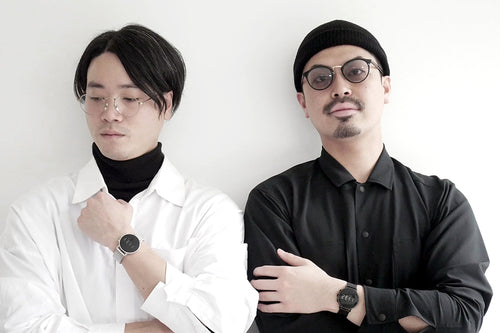Inspirational Tour - Opening Chapter
My brand, Normal Timepieces, is based in Tokyo. I have chosen to live in Japan for the past 34 years, because as a designer, I have always found inspiration here for my work. Before I first visited, I was studying world design history through my American university. I remember the thing that struck me the most about Japan was its quintessential sense of minimalism and craftsmanship. Today, immersed into the country, I can see echoes of this innate sensibility all around me - even in today’s pop culture.
When I am thinking things through for a new project and need a bit if inspiration, I have a personal tradition that has developed over time: my very own inspirational walking tour. It begins where I live, loops through some well-known areas like Harajuku, Omotesando, and Aoyama, always ending up back home. I do this because there is a creative energy ingrained in these places. Some of it is a naïve, youthful energy; some is sophisticated and visionary. No matter the form the creative energy takes, I find there is always something new to discover.
I’ve been wanting to write this article, because I have gained so much over the time I have been here. I feel it is time give some back. I hope that a few of you will get something out of this inspirational tour series, and some of my enthusiasm can be passed along to you. I plan to add a new installment on a monthly basis. Please let me know what you think, and if you would like me to cover any area in particular. If you have any plans to visit Tokyo, give me a heads up. I may be able to point you in the the direction for any events at that time, or seasonal things to look for.
Ross McBride

Volume 1 - 2020 Olympics Neighborhood
The first installment of my inspirational tour is a three-minute stroll away from my studio in Jingumae. This area is centrally located with everything I need in walking distance. It’s a good residential / business blend with a growing creative community of studios like mine, and many independent fashion brands. Jingumae was Japan’s original 1964 Olympics neighborhood, and is now being refurbished for the upcoming 2020 Olympics.

Speaking with some of my neighbors who have lived here for more than fifty years, they tell me how radically things changed when Japan prepared for their first Olympics. The remaining farmland in this area was replaced with many new roads and buildings. The oddly shaped street in front of my studio used to be a river. It is still there, but now underground. The 1964 Olympics is seen as a turning point for Japan. It marks the time when Japan became part of today’s international community, and its economy began to expand.
Perhaps the transformation won't be as drastic as it was in 1964, but when the 2020 Tokyo Olympics was announced, I could immediately see change. This neighborhood was never run down, but developers were focusing their attention on other parts of town. Now, city planners are rethinking everything, and individuals are putting more thought into what they should put on their own land. Everything around me is a big construction mess, but once it all settles down, my neighborhood’s upgrade will be very visible. It will be worth a look if you plan to visit Tokyo after next year.
Aside from all of the building going on, the most obvious project is the new Olympic stadium. This is located where one of the much smaller original Olympic stadiums stood, along with a hotel, several apartment buildings, and a free open market area. Not only is the new stadium huge, it also comes with its own scandal. I am not sure how much people outside of Japan are aware of this, but it was a prominent story here. Here’s the short version:
There was an international competition to design the Olympic stadium. The shortlist included big names. Zaha Hadid won the project. End of story.

https://www.dezeen.com/2015/08/13/richard-rogers-defends-zaha-hadid-scrapped-tokyo-2020-olympic-japan-national-stadium/
https://www.dezeen.com/2015/07/28/zaha-hadid-architects-warnings-ignored-japan-national-stadium-tokyo-2020-olympics-construction-costs/
In any case, the national stadium project was turned over to Kengo Kuma. You can see it along its way in the images below. As this new stadium began far after the original schedule, the construction schedule is extremely tight. According to their press, it is on schedule to be completed this November. My take on this new stadium is that it does fit better with its surrounding environment, and will be a good asset to my neighborhood. However, love it, or hate it, it will not become the iconic building that Zaha Hadid proposed.

This is the first rendering of how it Kengo Kuma’s stadium will look.

A recent photo of construction coming along.

This is the first view I have when approaching from my studio.
One thing that does bother me with this stadium is something that I can’t get out of my head. I will see this detailing every time I look at this building. The wood awning at several levels flows all of the way around the structure. What irritates me is that the wooden slats seem to be pitched randomly. There may be a very clear mathematic formula for this, but I can’t see its logic. I don’t know the reasoning for this, and assume it was well thought out. But it feels like they were on a tight schedule, and simply didn’t have enough time to work this out properly. What do you think?


Isn’t it obvious from these photos that some slats are packed tightly, while others have ample space between them. Why?

The highlighted section relates to everything referenced in this article. Normal’s office is where the NT logo is.






